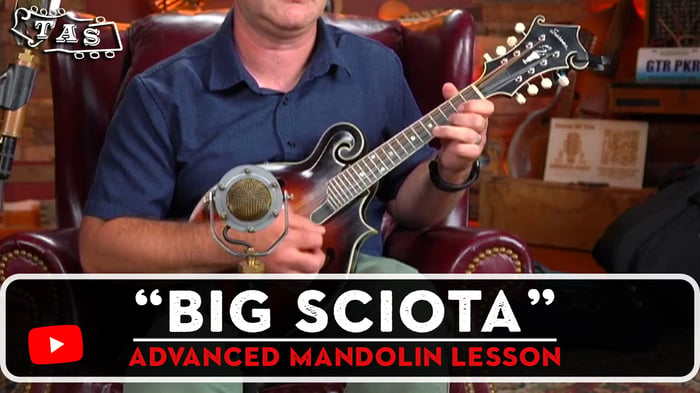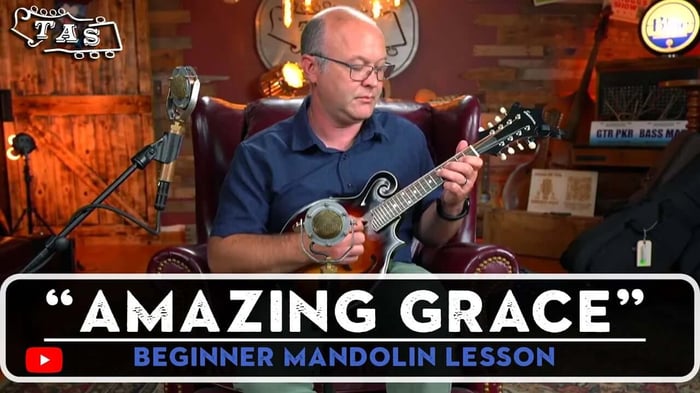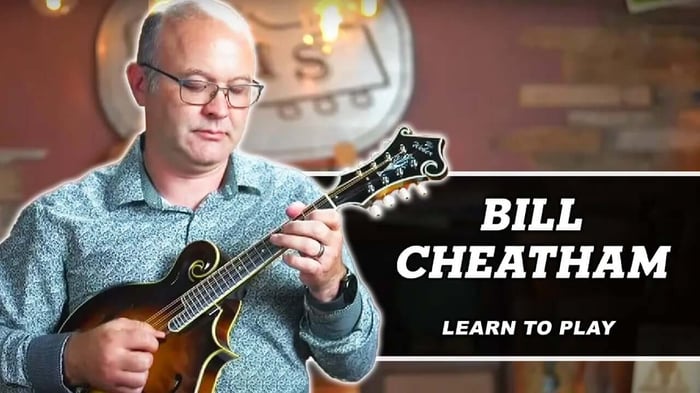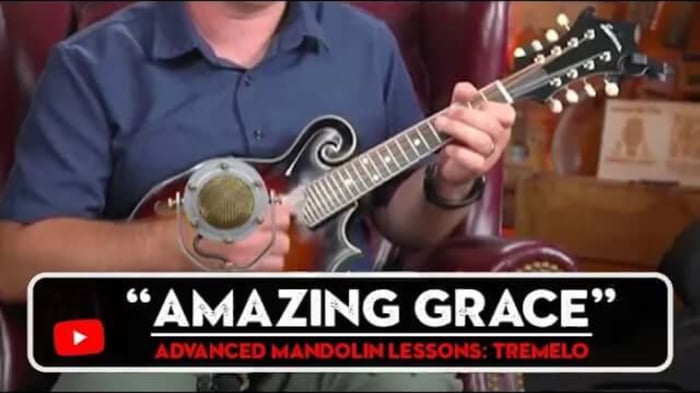Table of Contents
- Your Free Lesson: How to play Big Sciota on Mandolin - An Advanced Solo
- The Enduring Legacy of "Big Sciota": A Fiddle Tune Staple
- Key Takeaways from This Lesson: Unlocking "Big Sciota" on Mandolin
- Mandolin TAB/Chord Chart for "Big Sciota"
- Gear Used in This Lesson
- Continue Your Journey with Free Mandolin Lessons!
- Acoustic Shope FAQ
Your Free Lesson: How to play Big Sciota on Mandolin - An Advanced Solo
Welcome back to another edition of Acoustic Shoppe Mandolin Sessions! This week, Jeremy Chapman is raising the bar with a beautiful and intricate arrangement of the classic fiddle tune, "Big Sciota." If you've been working on our first beginner solo for this tune, you're in the perfect place to level up. This lesson will show you how to play Big Sciota on mandolin with a more involved solo, featuring key techniques like slides and double-stops that will give your playing a fuller, more dynamic sound. Jeremy breaks down this advanced solo measure-by-measure, ensuring you can tackle every part with confidence.
Grab your mandolin, and let's get started with your free lesson:
The Enduring Legacy of "Big Sciota": A Fiddle Tune Staple
"Big Sciota" is a tune that holds a revered place in the world of old-time and bluegrass music. The name "Sciota" (or sometimes "Scioty," "Scioto," or "Scioty") is an old name for the Scioto River in Ohio, and the tune itself has deep roots in American folk tradition. While its exact origins are a bit murky, it is most commonly attributed to West Virginia fiddler Burl Hammons. Hammons was a key figure in preserving the unique style of Appalachian music, and his recordings have been a source of inspiration for generations of musicians.
The tune gained significant popularity within the bluegrass and newgrass communities in the early 1990s, thanks in large part to the recording by a supergroup trio of virtuosos: dobro player Jerry Douglas, guitarist Russ Barenberg, and bassist Edgar Meyer on their seminal album Skip, Hop, and Wobble. Their version introduced "Big Sciota" to a wider audience and cemented its status as a bluegrass jam favorite. The tune's infectious melody and memorable chord progression make it a joy to play and listen to.
What makes "Big Sciota" so enduring is its versatility. It can be played as a simple, melodic fiddle tune or, as Jeremy demonstrates in this advanced How to play Big Sciota on Mandolin lesson, it can be a launching pad for intricate solos filled with harmonized notes and dynamic flourishes. Its AABB structure is perfect for jam sessions, with the A part typically played in a lower register and the B part moving to a higher, more energetic range. Whether you're playing it at a festival jam or on stage, "Big Sciota" is a tune that always gets toes tapping.
Key Takeaways from This Lesson: Unlocking "Big Sciota" on Mandolin
Jeremy's breakdown of this advanced "Big Sciota" solo is packed with valuable insights. Here are some of the most important points to focus on as you learn the tune:
Intricate Intro Lead-in: The solo begins with a more involved lead-in starting on the second beat of the measure before the melody begins. This uses a scale pattern (0-2-4-0 on the D string) that serves as a great warm-up exercise.
Alternate Picking is Crucial: With a high density of eighth notes, Jeremy stresses the importance of using strict down-up-down-up alternate picking to maintain rhythm and speed.
Holding Down Your Fingers: For smooth transitions, Jeremy demonstrates leaving a finger on a fret when you know you will be returning to that note shortly (e.g., the fourth fret after playing the fifth fret). This saves time and ensures a clean sound.
Sliding on the Offbeat: In the B part, you'll encounter a slide on an upstroke, a technique that adds a unique rhythmic feel and dynamic flair to your playing.
Mastering Double-Stops: The core of this advanced solo is the strategic use of double-stops. Jeremy explains how to use your ring finger to slide from the fifth to the seventh fret on the A string while your first finger lands on the third fret of the E string to create a rich, harmonized sound.
"Second Position" Fingering: A key fingering pattern is introduced in the B part where you keep your fingers in a "second position" (first finger on the third fret, middle on the fifth, ring on the seventh) to navigate the melodic phrases efficiently.
Understanding the Repeat and Endings: The lesson clearly walks you through the repeat signs and first/second endings, which are essential for playing the full form of the tune correctly in a jam setting.
Mandolin TAB/Chord Chart for "Big Sciota"
To help you learn this challenging solo, we've created a detailed, high-quality mandolin TAB with chords. This resource is designed to be a perfect companion to Jeremy's video lesson.
[Download a high-quality PDF How to Play Big Sciota on Mandolin TAB here!]
Note: The TAB is a visual guide. Remember to use Jeremy's video lesson to hear the timing, rhythm, and nuances of the arrangement for the best learning experience. Pro tip - On the YouTube video, click on the gear icon, then playback speed to adjust the speed of the solo for practice.
Practice Tips for Success with "Big Sciota"
An advanced solo like "Big Sciota" requires patience and a structured practice routine. Here are some tips to help you master How to play Big Sciota on Mandolin:
Start Slow and Steady: Use a metronome from the very beginning. Jeremy emphasizes this throughout his lessons, and it's particularly important here. Start at a slow tempo and gradually increase the speed only after you can play each section perfectly.
Isolate Problematic Sections: Don't try to play the entire solo at once. Break it down into small, two-to-four-measure chunks. Focus on the tricky slides and double-stops until they feel automatic.
Use the Practice Along Track: At the end of the video, Jeremy plays the solo and then the chords, giving you a chance to practice playing rhythm and soloing with a real-time partner. Use this to practice the transitions between the A and B parts.
Practice Your Scales: Jeremy mentions a specific scale pattern (0-2-4-0 on the D string) that is part of this solo. Dedicate time to practicing this and other G major scale patterns to build your finger strength and familiarity with the fretboard.
Focus on Tone: Pay close attention to your picking hand. Ensure your alternate picking is clean and your strokes are even. Listen for any unwanted string noise, especially when performing the slides and double-stops.
Listen to Different Versions: Listen to the original old-time recordings and the popular bluegrass versions of "Big Sciota" to internalize the melody and feel of the tune. This helps you develop your own musicality.
Hum the Melody: Before you play, try humming or singing the melody. This helps you connect the notes you're playing on the mandolin with the tune in your head, improving your musical memory and feel.
Gear Used in This Lesson
In this week's lesson (How to play Big Sciota on Mandolin), Jeremy is playing a stunning Eastman MD815 Mandolin. This is a beautiful F-style mandolin with a hand-carved Adirondack spruce top and highly flamed maple back and sides. The varnish finish and attention to detail give it a rich, woody tone that’s perfect for both old-time and bluegrass acoustic music. It's truly a testament to the craftsmanship you can expect from Eastman's Number One Dealer, The Acoustic Shoppe.
He's also using a few of his go-to accessories:
Tone-Guard: A must-have for comfort and tone, the Tone-Guard keeps the back of the mandolin from touching your body, allowing the instrument to resonate more freely.
Jeremy Chapman Signature Pick: Jeremy's signature Tone Slab pick is a favorite for its 1.3mm thickness, providing a powerful attack and a full sound.
D'Addario Eclipse Tuner: This clip-on tuner is reliable, accurate, and essential for keeping your instrument perfectly in tune.
Tone-Gard Mandolin - Deco

$79.99
The Tone-Gard™ is designed to isolate the back of a mandolin (or any similar instrument) from the player's body, producing more volume and enhancing the tone. You can test the concept right now without a Gard. Play your instrument normally,… Learn more...
ToneSlabs Darth Tone Series *Jeremy Chapman* Signature XL Tri Corner Guitar Pick - 1.3 mm

$35.00
*Jeremy Chapman's Signature is engraved on these picks*Darth Tone series of picks offer the same shapes and thicknesses that you love. The particular Imide ToneSlabs uses for these, offers more bass response while still maintaining ultimate clarity. Size 33mm corner… Learn more...
Continue Your Journey with Free Mandolin Lessons!
We hope you've enjoyed this lesson and feel inspired to take your playing to the next level. The mandolin is a lifelong journey, and we're here to help you every step of the way.
If this version of How to Play Big Sciota is too advanced for where you are currently, check out our easier arrangement lesson. How to play Big Sciota on Mandolin easy solo.
Looking for another great fiddle tune? Try our lesson How to play Bill Cheatham on Mandolin.
For a complete library of all our free mandolin lessons, a great resource for any aspiring acoustic music player, visit our Mandolin Session page.
About Your Instructor: Jeremy Chapman
Your mandolin journey at The Acoustic Shoppe is guided by Jeremy Chapman, a musician who truly lives and breathes acoustic music. Jeremy spent over 25 years touring and performing with his family's bluegrass band, The Chapmans, even gracing the iconic stage of the Grand Ole Opry. With two decades of experience teaching private mandolin lessons, he's helped countless students find their way around the fretboard. Jeremy is also the author of the popular Do-It-Yourself Mandolin book (Hal Leonard), known for making learning accessible and fun. As President and CEO of The Acoustic Shoppe, he's dedicated to bringing the joy of music to players everywhere.
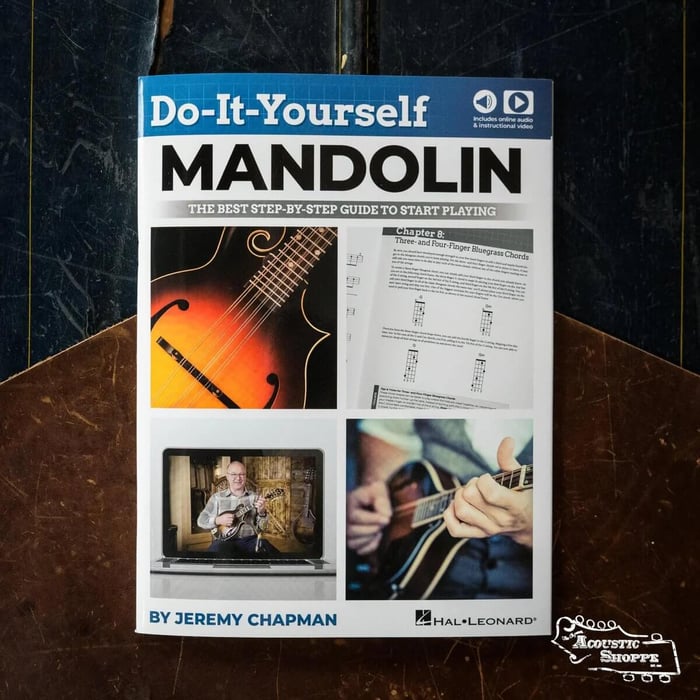
Acoustic Shoppe FAQ
Is this lesson suitable for beginners?
This lesson is designed for intermediate to advanced players who are already familiar with the basic melody of "Big Sciota." If you are a beginner, we recommend starting with our first solo for this tune, which provides a more foundational approach.
What mandolin techniques are covered in this advanced solo?
This lesson focuses on several key techniques, including intricate alternate picking, slides, double-stops (playing two notes simultaneously), and strategic fingering to navigate the fretboard efficiently.
Do I need to be able to read standard notation or music theory to follow this lesson?
No, you don't. The lesson is taught by ear and is accompanied by a free mandolin tablature (TAB) download. The TAB is a visual guide that shows you exactly where to place your fingers on the fretboard, making it accessible to players of all backgrounds.
What gear is Jeremy using in this video?
Jeremy is playing an Eastman MD815 Mandolin. He also uses a Tone-Guard, a Jeremy Chapman Signature Tone Slab pick, and a D'Addario Eclipse tuner. You can find more details and links to a dedicated blog post about the mandolin in the "Gear Used in This Lesson" section.
How can I get the tablature for this solo?
A high-quality PDF version of the mandolin TAB and chord chart is available for free. You can find a download link in the "Mandolin TAB/Chord Chart for 'Big Sciota'" section of the blog post.
What are the best ways to practice this advanced solo?
Jeremy recommends starting slowly with a metronome, isolating difficult sections, using the "practice along" track at the end of the video, and dedicating time to practicing your scales. You can find more detailed tips in the "Practice Tips for Success" section.


